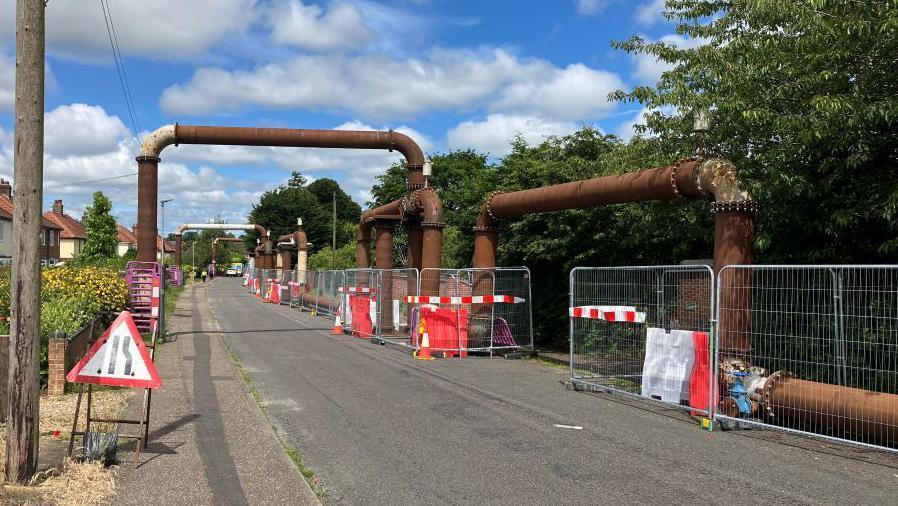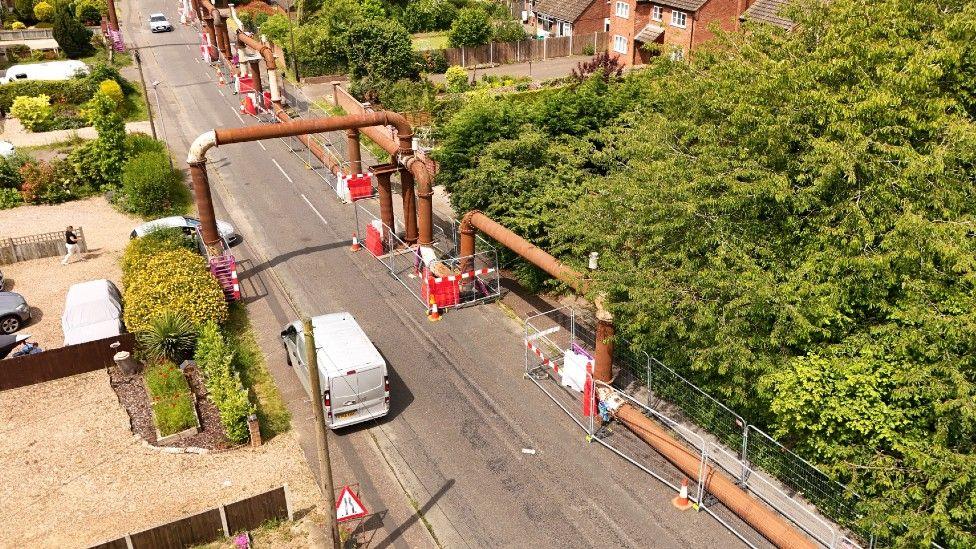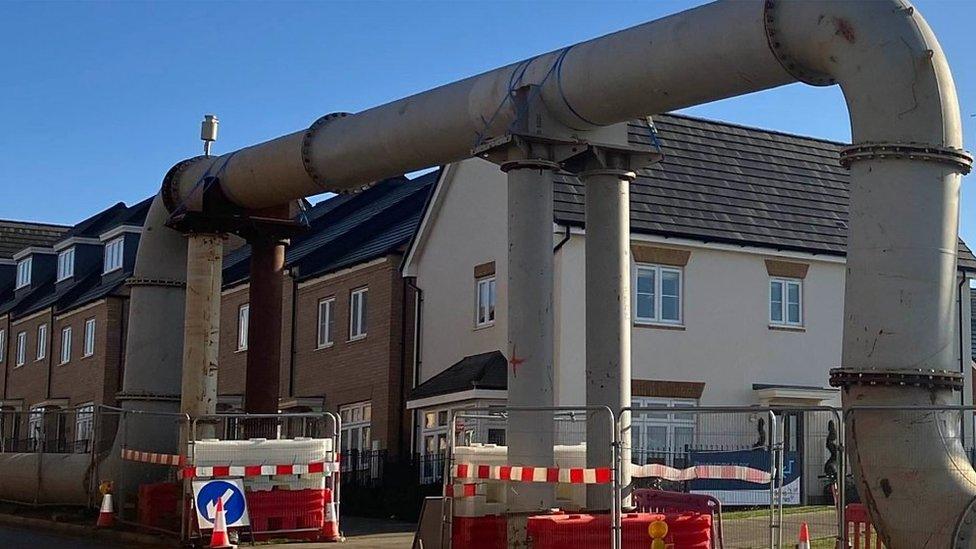Above-ground sewage pipe is 'innovative solution'

The pipe is 650m long (2,130ft) and carries waste four miles (7km) to the treatment plant
- Published
A water company has said its "innovative" above-ground sewage pipe has been designed to cause less "disruption" for local people.
A total £1.7m is being spent on fixing the water mains in Blue Boar Lane in Sprowston, near Norwich.
The temporary above-ground pipe was installed by Anglian Water in April and is due to be dismantled at the end of July.
It means residents can continue to use their showers, toilets, dishwashers and washing machines during the repair works.
The pipe is 650m long (2,130ft) and pumps waste four miles (7km) to Whitlingham, on the outskirts of the city, where it is treated.

Lee Forth from Anglian Water said the pipe was "working perfectly"
Project manager Lee Forth said the temporary pipe meant residents had the same access to the road and there would be no traffic management.
"The traditional method would be to lay a new main, which would involve digging up the road which would mean we would be here much longer than we have been," he explained.
"We have come up with an innovative solution where we can reuse the existing main which means there are far few excavations... and less disruption to the residents."

Anglian Water says £1.7m is being invested to prolong the water main's lifespan in the road for another 60 years
While Mr Forth says the appearance of the pipe is "a bit of a shock" to residents, he says it is "working perfectly".
The water main in the road has previously burst.
Anglian Water hopes the repairs will prolong the water main's lifespan in the road for another 60 years.
Follow Norfolk news on Facebook, external, Instagram, external and X, external. Got a story? Email eastofenglandnews@bbc.co.uk, external or WhatsApp us on 0800 169 1830
Related topics
- Published6 February 2023
